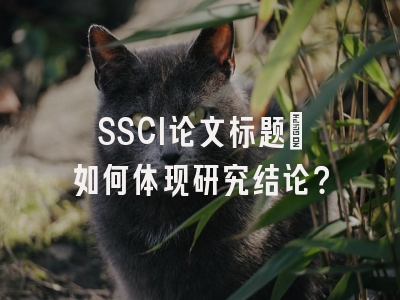Major Revision 回复信核心结构(三件套)
一次完整的大修回复应包含以下三个部分,请将它们打包成一个压缩文件上传:
- 回应信(Response Letter / Rebuttal Letter): 核心文件,逐条回复所有意见。
- 修订稿(Revised Manuscript): 两种版本。
- 清洁版(Clean): 无标记的最终稿。
- 标记版(Highlighted / Marked): 用不同颜色高亮所有修改处。
- 补充材料(Supplementary Materials,如适用): 新加的图表、数据等。
以下将重点详解最核心的 回应信(Response Letter) 的写法。
回应信(Response Letter)标准结构
一份专业的回应信通常遵循以下四部分结构,确保编辑和审稿人能够一目了然。
第一部分:致编辑的信(Cover Letter to Editor)
这是一封写给编辑的简短概要信,体现礼貌和全局观。
核心要素:
- 礼貌开场: 感谢编辑给予修改机会。
- 概括态度: 表明你高度重视审稿意见并进行了认真修改。
- 简要说明: 提及修改的全面性(如补充实验、全文润色等)。
- 引导查阅: 说明随信附上的详细回复和修订稿。
模板:
Dear Dr. [编辑姓氏],
Thank you very much for your letter and the reviewers’ constructive comments on our manuscript entitled “[您的论文标题]” (Manuscript ID: [稿件编号]). We sincerely appreciate the opportunity to revise our work.
We have carefully considered all the comments and made extensive revisions to the manuscript accordingly. These revisions include: [选择性简要列举1-2项最重要的修改,如: conducting additional experiments as suggested by Reviewer 2, thoroughly polishing the language, and restructuring the discussion section]. We believe that the manuscript has been significantly improved as a result.
In this revision, you will find:
- Our point-by-point responses to all comments (below).
- A marked version of the manuscript with all changes highlighted in yellow.
- A clean version of the revised manuscript.
We hope that the revisions meet with your approval. Thank you again for your time and consideration.
Sincerely, [您的姓名] [您的职位/单位]
第二部分:修改要点清单(List of Changes / Summary of Revisions)
这是一个可选的但非常加分的部分,位于逐条回复之前。它以清单形式让编辑和审稿人快速了解修改工作量。
模板:
Summary of Major Revisions
- Experiment: Added a new experiment to investigate the effect of X on Y, as suggested by Reviewer 2 (see new Figure 5 and Results section, page 12).
- Analysis: Performed additional statistical analysis (ANCOVA) to control for potential confounding factors, as suggested by Reviewer 1 (see Statistical Analysis section, page 6).
- Discussion: Significantly expanded the discussion to address the limitations of the study and its broader implications, as suggested by Reviewer 3 (see Discussion, pages 15-16).
- Language: The entire manuscript has been professionally edited for language and clarity.
第三部分:逐条回应(Point-by-Point Response)
这是回复信的灵魂,必须清晰、严谨。
黄金法则:
- 三要素缺一不可: 审稿人意见原文 -> 您的详细回复 -> 修改位置说明。
- 格式清晰: 使用字体、颜色或缩进区分审稿人意见和您的回复。
- 分类策略: 采用我们上一轮讨论的“接受/争议/不可行”三类策略进行回应。
标准格式模板:
Responses to Reviewers
Response to Comments from Reviewer #1
Comment 1: [粘贴审稿人1的第一条意见原文] Response: We thank the reviewer for this insightful suggestion. We agree that [表明你认同的态度]. Accordingly, we have [详细说明你做了什么修改]. This change can be found in the [方法/结果/讨论] section on page [X], lines [Y-Z] of the revised manuscript. (如果修改复杂,直接引用修改后的句子) The revised text now reads: “[引用修改后的原文]”.
Comment 2: [粘贴审稿人1的第二条意见原文] Response: [根据意见类型,套用不同的回应策略…]
Response to Comments from Reviewer #2
Comment 1: [粘贴审稿人2的意见原文] Response: We are grateful to the reviewer for raising this important point. We have now conducted additional experiments to address this concern. [详细描述补充实验的过程和结果]. The results are presented in the new Figure 4 and described in the Results section (page [X], lines [Y-Z]). As shown, [简要说明新数据如何支持了你的结论或回应了审稿人的关切].
第四部分:结尾
最后可以简单表示感谢和期待。
We sincerely thank the editors and reviewers for their time and valuable comments, which have greatly improved our manuscript. We look forward to hearing from you regarding our submission.
关键要点与最佳实践
- 态度决定一切: 始终保持尊重、感激和诚恳的态度。“We thank the reviewer for this constructive comment.” 是万能开头。
- 修改处处可查: 务必在回复中指明修改发生的具体位置(页码、行号),并在修订稿中高亮标记。这是回应有效性的关键证据。
- 补充实验是“王牌”: 如果审稿人要求补实验,而你有条件完成,这将是极大加分项。在回复中详细描述实验设计、结果和结论,并整合到论文中。
- 不要遗漏任何一条意见: 即使是一个拼写错误,也要认真回复“We have corrected this typo.” 这表明你细致入微。
- 有理有据地“Argue”: 对于不同意的意见,不要直接拒绝。要先感谢,然后用数据和文献委婉地解释你的理由,并尽可能在文中做一些补充说明以示尊重。
© 版权声明
本文由分享者转载或发布,内容仅供学习和交流,版权归原文作者所有。如有侵权,请留言联系更正或删除。
相关文章

暂无评论...





















